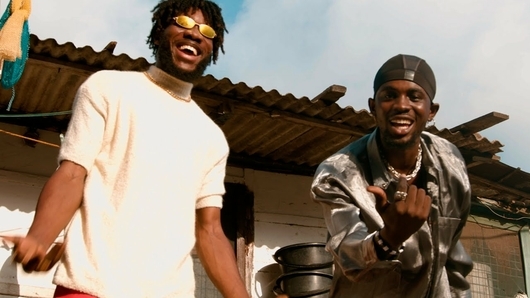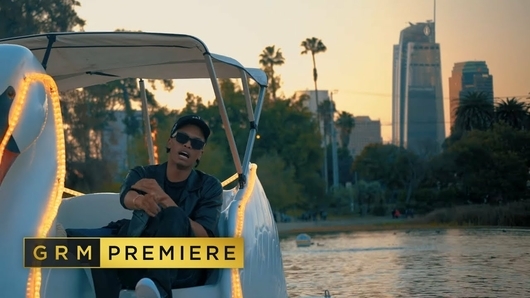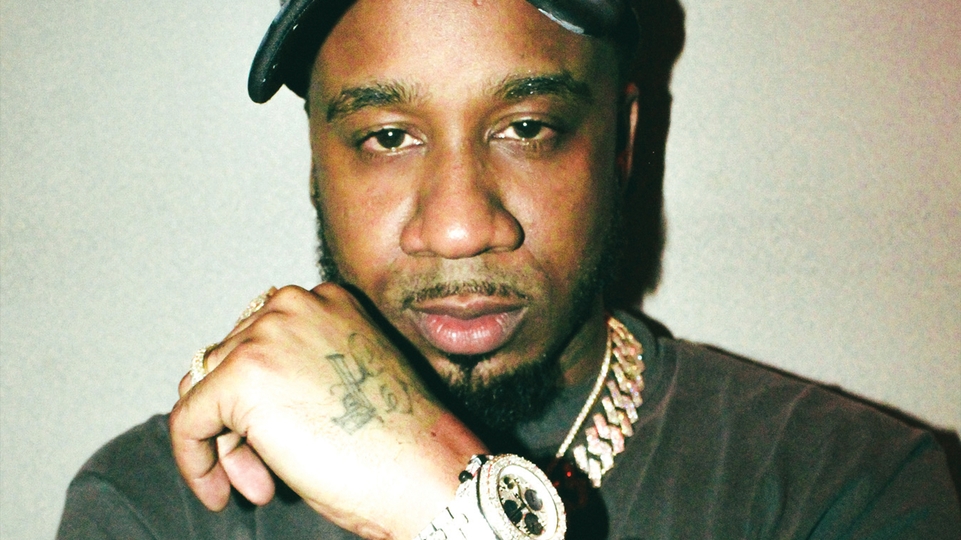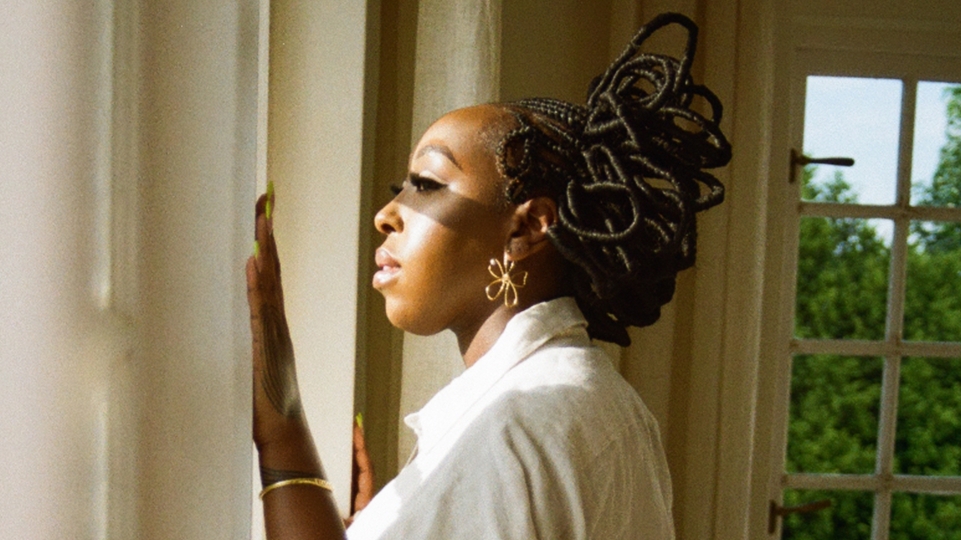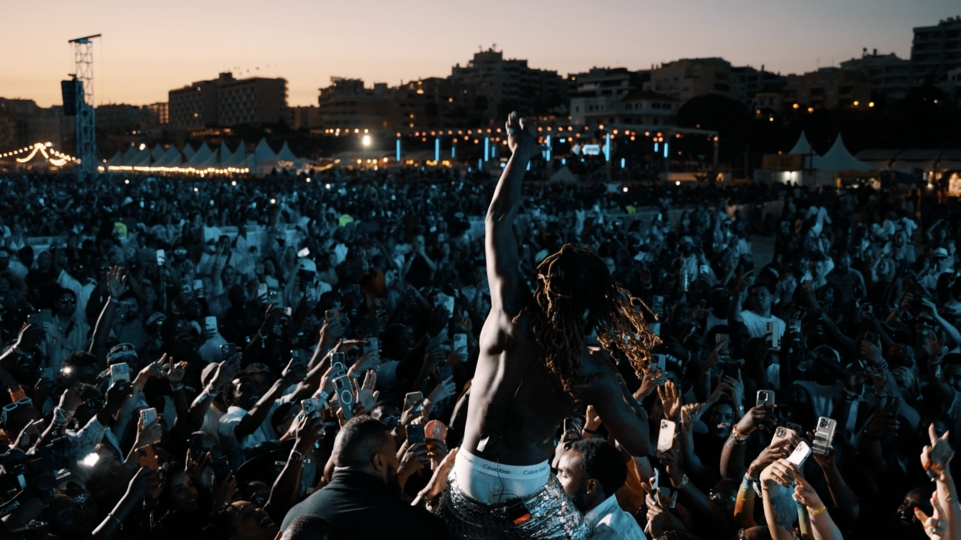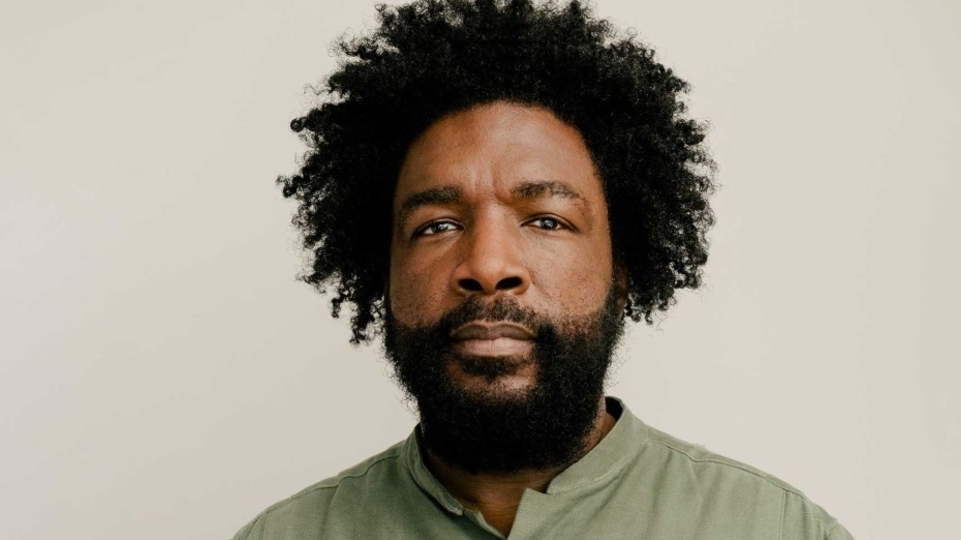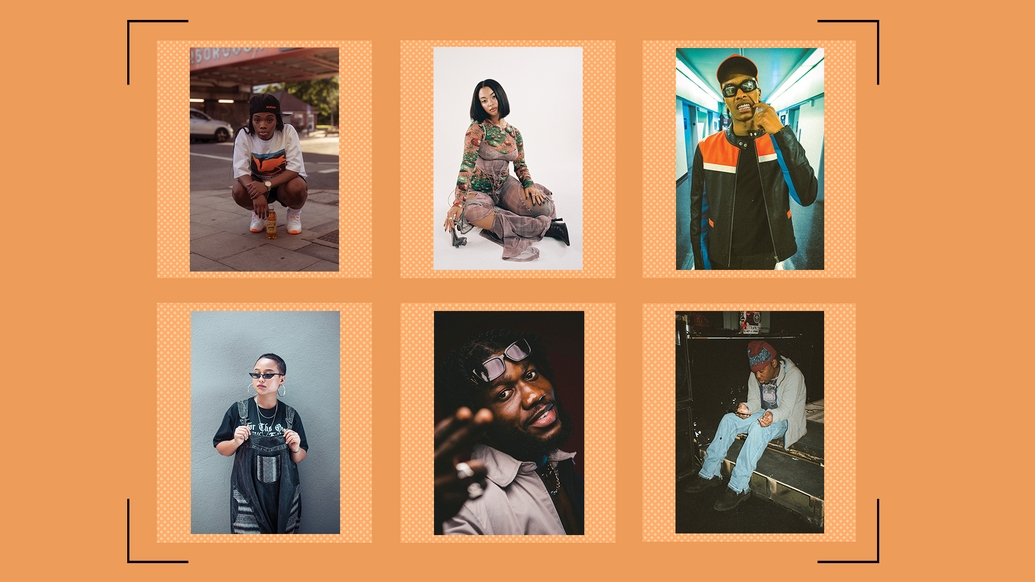
DJ Mag’s rap artists to watch in 2023
Introducing the MCs, DJs and producers set to make an impact on the global rap scene in 2023. From voices that can move between dancehall and drill, and those challenging industry shortcomings, to a DJ mixing hip-hop and R&B with amapiano, and producers pushing localised hip-hop sounds into the future, these are the artists daring to be different and set to make the global rap scene theirs this year
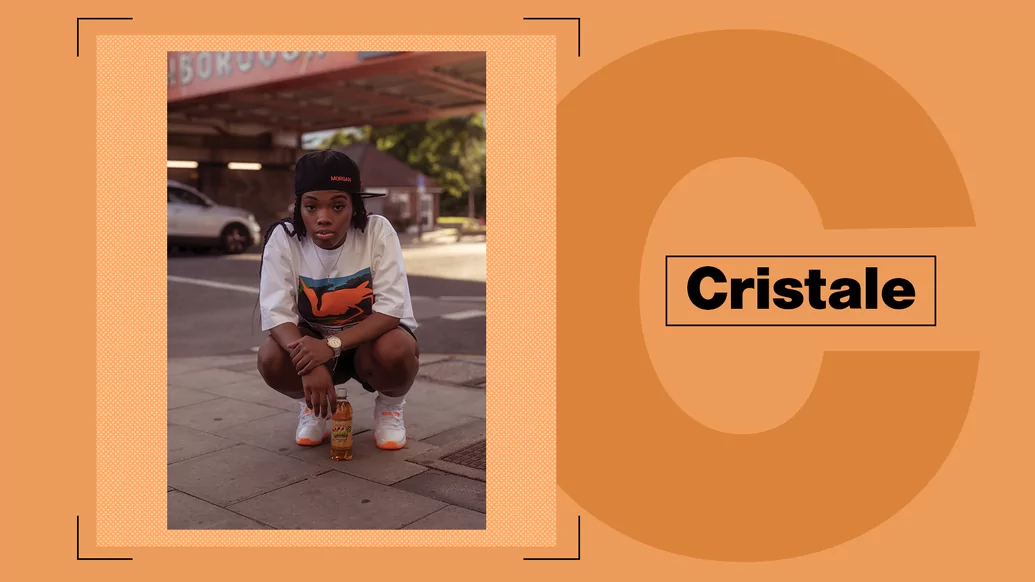
One of the UK’s most promising and versatile MCs, Cristale has proven herself across dancehall, drill and jungle, spitting fire one minute before going deep and introspective the next
To describe Brixton native Cristale as multi-talented is an understatement; the young artist was winning poetry slams in secondary school, used to play football for Crystal Palace, and has completed a degree in Fine Art at the University of the Arts, London. She first made waves as a rapper with a series of freestyles in 2020, conquering instrumentals like Poundz’s ‘Opp Thot’ and Pa Salieu’s ‘Frontline’ and making them her own. “Sorry rude boy, mi neva mean that / But you got popped like a big eediat,” she menaces over blaring synths on the latter, lacing her commanding flow with Jamaican patois.
In spring of 2022, she experienced her breakout moment, but it wasn’t via the searing drill and rap cuts that were becoming her trademark; it was the infectious dancehall riddims of ‘Bong, Bing’ — a collaboration with Laa Lee — that blasted her career upwards after it went viral on TikTok, revealing another layer to her artistry in the process. Cristale was enjoying a rare moment of alone time with her grandmother on the day a TikTok post of her dancing in the gym to the track popped.
“I had to go to my nan’s to braid her hair. It was just us. We hadn’t spent time together one-on-one for years,” she tells DJ Mag. “So the day itself felt blessed already. Within an hour, it just went off. My nan said, ‘You watch, this is gonna be big!’ But I like to remain humble because everything is a gift from God.” Cristale’s nan was right, though. Within a couple of weeks, videos of people dancing to the track on top of the pyramids in Egypt were posted. “Even my childhood hero Raven-Symoné was doing the dance,” she remembers.
Arguably more important than the snap viral success of ‘Bong, Bing’ was the way the track reinforced Cristale’s own pride in her heritage. “It did a lot, within myself. I’m not really in touch with my Guyanese roots like that. I want to go there and be around my family. That’s my dad’s side,” she explains. “My Jamaican side is more prominent in me because I’m around my Jamaican family members. So I felt a bit detached from the Guyanese side of me. The response to the track made me feel closer to my roots.”
Cristale went on to work with dancehall king Beenie Man, Nia Archives and ShaSimone, shelling her verse on CLIPZ’s junglist anthem ‘No Time’. It was another standout moment in 2022. In contrast to the bashy, bubbling vibes of ‘Bong, Bing’ and ‘No Time’, Cristale’s debut EP ‘What It’s Like To Be Young’ — which landed in June last year — is painted in colder, darker tones. Over long-time collaborator ZEL’s drill productions, Cristale spins introspective coming-of-age tales. Citing Drake and Lauryn Hill as key influences, the project showcases her songwriting ability and a willingness to be vulnerable. Songs like ‘Morgan’ and ‘13 going on 30’ feel cathartic, like rainy night- bus confessionals. “Artists need therapy, they need counselling,” Cristale admits. “Sometimes you can’t speak openly about what’s wrong with you, you can only create. So sometimes songwriting is therapy, but sometimes it’s just the catalyst for figuring out what’s wrong.”
Cristale is determined to unapologetically be herself as an artist, and if that means tapping into the darker recesses of her mind then so be it. She says Peckham driller PS Hitsquad is to thank for that. “He unlocked something in me... that grittiness you hear, I spent a long time trying to find that in my sound.” Fresh out of jail, PS joined Cristale in the studio. She describes herself as quite an anxious person, but managed to overcome that anxiety and bonded with the rapper, recording a yet-to-be-released EP in the process. “He taught me to be myself and let it all out on the mic,” she remembers. In 2023, that’s what she intends to do. Rob Kazandjian

Though best known as part of the flourishing Michigan rap scene, prolific beatmaker Flea Diamonds’ productions and collaborations reflect influences and connections that span the USA
“It really was a mind-blowing year,” beams Flea Diamonds over a video call as he weaves his way through the busy streets of New York City on a cold winter’s day. “It started off crazy and ended perfectly.” Wearing a red knitted beanie hat and grey hoodie, the crazy start to 2022 he’s reminiscing about is the release of ‘Sincerely Face’ last January. The lead single of the debut album from Babyface Ray — one of the biggest exports from the new generation of Detroit rappers pushing the city’s hip-hop scene in recent years — the track has since amassed over five million views on YouTube and was produced by Flea Diamonds.
Flea Diamonds first made a name for himself as part of the wave of artists that worked at Detroit’s Whitehouse Studio, a tight-knit community that has played a large part in helping put Detroit rap back on the map. The scene has helped make stars out of Babyface Ray, 42 Dugg, Baby Smoove and Tee Grizzley, as well as nurturing up-and-coming artists including Los x Nutty, Wanski and the World Tour Mafia collective.
“Detroit brought reality rap back,” he says, speaking about the scene. “A lot of rappers aren’t really living what they’re rapping. Detroit came in the game and was like, ‘Yo. These rappers are broke’. Trappers aren’t really living what they’re talking about. Detroit brought back that street essence. Right now the game is kind of shifting. It’s still the streets. But the suburban market is more of an influence to the culture. So we’ve been washed out by gimmicks and bubblegum pop shit. You can’t be mad because it’s kids in charge of this culture. [But in] Michigan we take lyrics very serious. You can’t just rap about something you didn’t live. Because everybody’s so close, we’re gonna come check you about that.”
With a string of other tracks including placements with Lil Yachty, Veeze and Dc2Trill, Flea Diamonds is best known for a blown-out trap sound that combines the darker melodic elements of Detroit with the swing of Southern rap beats. And he explains that it’s his exposure to different music and scenes growing up that led to this. Now based in New York, Flea Diamonds was born in Haiti, before relocating to the US with his family as a child. Moving between New York, Florida and Michigan, he went to high school in Lansing, and once graduated moved to spend time in Atlanta, Georgia. “I mix both borders,” he explains. “I’m trying to create a new world as I don’t want to get stuck in the cycle of the same shit.”
Flea Diamonds’ second tape, ‘VVS2’, landed in December and is a continuation of this approach. Featuring appearances from rappers including Tony Shhnow, 2SKi, Fleacoo and Kenny V, it covers collaborations with artists from Detroit, New York, LA, Atlanta and Texas. The volume of music he’s putting out reflects an incredible work rate, which he says comes from growing up as an artist in the Detroit scene. “Everybody in Michigan’s work ethic is insane,” he explains. “We have nothing to do so why not connect with each other?”
It’s only midday when he speaks to DJ Mag, and Flea Diamonds says he’s already made 10 beats. Now he’s on his way to link up with a rapper and artist he doesn’t want to name, but says he has big tracks with Veeze, Lil Uzi Vert and Baby Keem all on ice. “I don’t expect nothing from nobody,” he smiles. “But if something happens and they drop the songs, it’s all good.” Although those tracks are yet to be confirmed for release, it signals the start of another big year for the fast-rising rap producer. Rob McCallum

Despite simplistic gender tags and the dominance of the neighbouring Indian scene, Nepalese rapper Dmriti is shining bright, her slick lyricism and willingness to combat tough topics making her a standout voice
Whether it’s in her music videos or on stage, Dmriti carries herself with a commanding sense of self. She delivers razor-sharp bars over fiery production; her braggadocio swagger oozes self-assuredness. Yet, in person, when she’s able to take the cloak off, Smriti Bishwakarma emerges. Shy, almost reticent to take up space in a room, Dmriti is puzzled at how she found herself here: at the forefront of Nepalese rap, popularly known as Nephop. “Initially, I didn’t take it seriously,” she whispers through voice notes several months after we first meet. “I didn’t even know if it was something I wanted to do. Then, something in me just kept going, although I didn’t know where I was going, but just blindly moved forward. I was just having fun.”
She began in hip-hop as a means to settle her hyperactive mind. “When I got bored, I had to pick a hobby,” she says. “I used to sing and dance. I developed a hobby by rapping but then I slowly started making songs and uploaded those on YouTube.” Dmriti slowly and patiently honed her skills and, at 21, possesses such qualities that her ceiling feels nowhere in sight. She discovered hip-hop four years ago and her rise has been astronomical since. With self-directed music videos reaching nearly half a million views, in Kathmandu she’s become a mini-celebrity — yet is constantly being told she is a “female rapper”.
The current Nepali rap scene has very few women rap artists. At awards shows or as she is introduced to the stage, “female” has become a constant qualifier to define Dmriti. Frustratingly, her music has nothing to do with her gender — vitriol felt on her recent single, ‘Female Rapper’, where she spits, “Female Rapper / Call me the best rapper / Don’t need your label / For me to get bigger.” “I’ve worked hard to be where I am,” she says. “I didn’t know anything about the industry initially, but I have faced a lot of patriarchal bullshit. I’ve stayed solid in the mainly male-dominant field and I’m still growing and learning.”
With only a handful of songs to her name, it’s her talent and choice to tackle hard topics that have set Dmriti apart already. On ‘Purple Haze’, she talks about mental health issues and dependence on weed, saying “I don’t wanna be anywhere / I’ve been patiently waiting for death”.
On ‘Hide And Seek’, a warning track to the rest of the scene, her braggadocio self comes out, while her features on various tracks throughout the scene seem to elevate it entirely. “I’ve had fun doing this although I wasn’t even intending to have this as a career,” she says.
Despite glaring sexist issues, the rap scene in Nepal is thriving. It has existed for longer than India’s scene yet, due to its economy and population size, has been dwarfed. None of the major labels have acknowledged the talent in Nepal, with some artists choosing to go to Mumbai to secure a deal only to find that racism and classism obstruct their entry point to the industry there. So, does Dmriti see her future elsewhere?
“The future looks like gold for me,” she says. “I’ve been investing in myself, directing my own music videos. I know about everything and I’m learning all that I need to do when it comes to building myself. I certainly now know a lot more about production. I’ve got a few projects coming up and let me say, I’m just shooting for the stars, man.”
Wherever she ends up, Dmriti is sure to light up any room she’s in, no matter what cloak she chooses to wear. Dhruva Balram
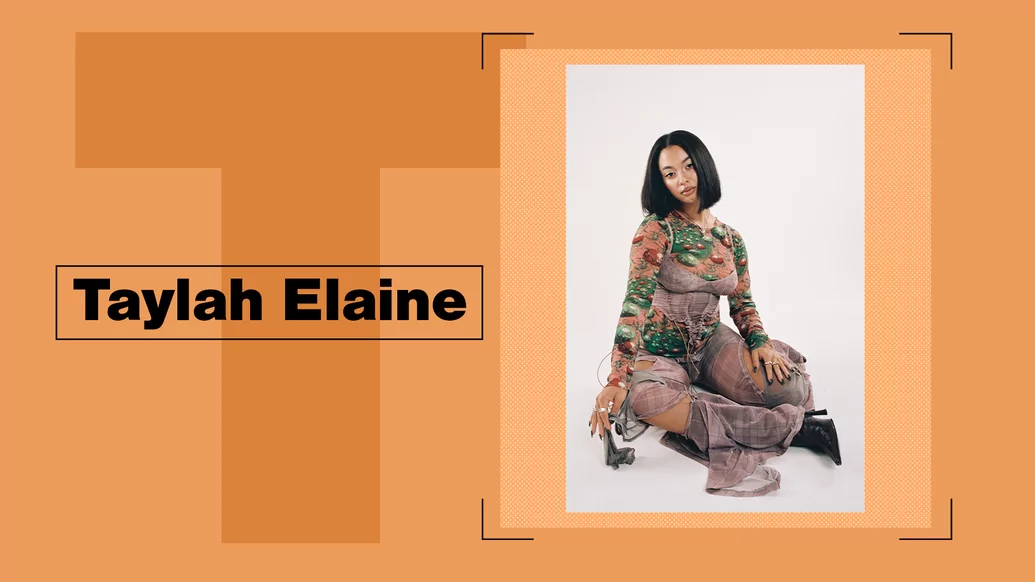
With an ear for a killer edit and willing to spin everything from hip-hop, R&B and trap to dancehall, amapiano and syncopated club cuts, Taylah Elaine has become a key booking from festivals to fashion shows
When DJ Mag calls up Taylah Elaine, she’s in the midst of having her “first little viral moment”, she laughs, from her bedroom in Stratford. A clip of her dropping a Kendrick Lamar and Gorillaz edit at Boiler Room festival in Amsterdam is doing the rounds, with rap lyric site Genius labelling her taste “next level”. These kinds of bootlegs and reworks (Kelis’ ‘Milkshake’ into Giggs’ ‘Whippin’ Excursion’, anyone?) are the cornerstone of her energetic, sharply blended sets, and she finds herself endlessly poring through releases on SoundCloud and Bandcamp, sourcing the ones she knows will go off. “I update my USB, like, every day,” she says.
28-year-old Taylah grew up in Homerton and still lives close by in East London. As a ’90s baby, she absorbed a diet of R&B, soul, and Michael Jackson, but “as I came into my teenage years I went all over the place,” she says. “Soft rock, disco — you can really hear it in my sets. I do play a little bit of everything.” She began playing around with a pair of decks in a friend’s studio at 21, posting a mix she’d crafted from her bedroom before cutting her teeth on various stations like NTS and Rinse, enjoying the freedom they allowed her. “That helped me a lot in terms of being able to find my feet,” she says.
When she stepped out of her bedroom and started DJing to live audiences, she was “a bit of a crowd pleaser”, she admits, before adopting an I’ll-play-what-I-want mindset, realising that trusting her own ear was key. “I want to play for crowds that are open, that don’t just want me to play one genre, because that doesn’t work for me.” Alongside soundtracking Paris Fashion Week parties and festivals like Maiden Voyage and Wireless, she’s DJ’d for other performers including Little Simz, Pa Salieu and Knucks, but is focusing on her solo game now, “because it’s a different world, DJing for artists”. She’s also working on her own productions, which she’s hoping to have out later this year.
When the pandemic put a temporary halt to her bookings, Taylah used the opportunity to start Plus 1 Radio, an online station with a worldwide roster. Born from a party series of the same name, it championed women and people of colour and helped her peers connect amid scarily uncertain times. “It was a nice little community that we built,” she says. Although it’s currently off air — running it by herself once IRL parties got back into full swing became impossible — she’s planning a relaunch.
As someone with a strong sense of style, as well as a background working in fashion PR, she’s been a shoo-in for fashion party bookings, with January’s private party schedule taking up most of her time. Taylah’s rapid blends might be the kind that’ll get a crowd going instantly, but she’s adamant that she’s not much of a partier in her downtime. “I love cooking and baking, and boxing — I’m at the start of my health journey,” she says. “I’m really awkward [at clubs] when I’m not DJing, I just don’t really know where I belong!”
While the wide scope of genres that Taylah touches — often fitting together sounds that you’d never believe would go until you hear her mix them — means it’s hard for her to pick any favourites, right now she’s especially loving an amapiano edit, she says. “A good one goes a long way!” You might just catch the next one from your phone, with thousands of fire emojis agreeing. In the meantime, check out a wicked mix below, recorded exclusively for DJ Mag. Felicity Martin

Blending the ever-evolving highlife sound with asakaa’s low-end, working with artists from Black Sherif to Kojo Funds, producer Samsney is paying homage to tradition while pushing Ghanaian music into the future
Highlife — so named because of its association with its originators performing at only the most exclusive venues on Ghana’s coast — has gone through an evolution since it first emerged in the latter years of the 1800s. By the mid-20th century, the genre splintered into two strains: guitar highlife and dance highlife, the former favoured in rural areas where guitars and stringed instruments had a deeper rooting, while the latter exploded in popularity in the cities.
At this point, it’s worth mentioning ’50s pioneer E.T. Mensah, whose work importing sounds like swing, calypso, and Afro-Cuban music into highlife would influence several generations to come (as well as Louis Armstrong, who became enamoured with the sound on a visit in the post-war era). Across those generations, more evolutions came and left their mark on the sound; there was the roots revival of the ’70s that sought to return to highlife’s origins, a Nigerian iteration championed by Fela Kuti, a German iteration dubbed burger highlife and pioneered by George Darko, and finally, hiplife.
That whistle stop tour through the better part of a century is, of course, far from an exhaustive history, but it’s worth signposting these different eras because Samsney’s music is informed by all of them, and he’s keen that the history be remembered and acknowledged. The issue of gatekeeping crops up in just about every genre and always has done, but for Samsney it’s essential. “All the attention we’re getting, it’s very inspiring and motivating for us as a culture. We’ve been yearning for the publicity and then the collaboration from artists, producers and engineers. But one thing we shouldn’t forget as an industry is to keep the originality of the sound. The South Africans have done an amazing job with their genres, as we’ve seen recently with amapiano. It’s commendable and it’s the way forward for Afrobeats and highlife. That’s what I’ll say.”
He’s keenly tapped into the sound’s history. He cites highlife legend Daddy Lumba as an early influence, as well as the more fluid Kojo Antwi, a kindred spirit famous for infusing his sound with everything from lovers rock to Congolese soukous. That traditionalist bent, he tells DJ Mag, was instilled in him from an early age. “I’ve always had the passion for it because I used to play a piano at the church, so I’m a church boy.”
That said, he’s also a progressive and as keen to push the sound forward as anyone, just as long as the roots are respected and maintained. Take his first two tracks (both instant hits, by the way) — last year’s ‘Kuacha’ with Black Sherif, Kelvyn Boy, and Darkovibes, and his debut single, ‘Golddigga’, also with Black Sherif. Both tracks are built with light-footed guitar licks and uniquely Ghanaian melodies, but there’s also the shuddering low-end of asakaa, the local take on drill’s hallmark 808s.
Moving forward, he’s keen to work with up-and-comers as much as legends. Of the former, he points to rising talents Larruso and Kemaga, but he’s also quick to salute a lot of UK talent, like Kojo Funds, whom he joined up with on Kelvyn Boy’s ‘Hangover’ from his 2020 album ‘Blackstar’.
Naturally, he wants to be as successful as possible, but striking that balance between progression and tradition will always be paramount. Above all, it’s imperative to him that the production value of highlife and Ghanaian music remains at the absolute pinnacle. “When it comes to sound, I’m a sound engineer, and I mix and master too. So I’m looking for quality, making sure that newcomers stick to quality sound. Anytime we make music, we just try to make timeless music. We don’t think about whether it will be a hit or not. We just make music for people to love it.” James Keith
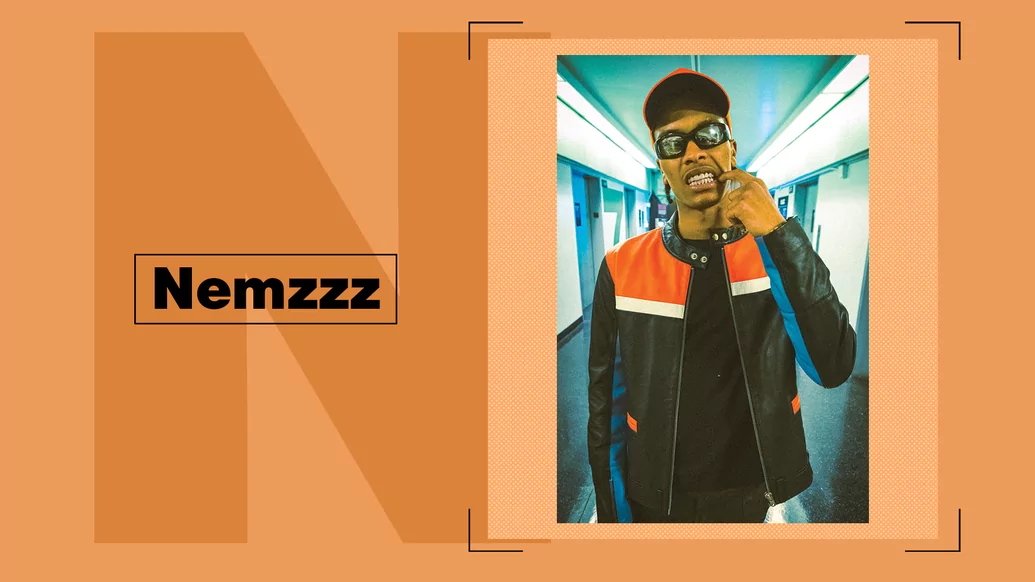
Manchester’s Nemzzz has built a loyal fanbase while priding himself in operating in his own lane of UK rap. With hit tracks to prove it and more to come this year, he speaks to DJ Mag about the importance of being different and getting involved
After bursting through early last year, Manchester-born rapper Nemzzz is tipped for a huge 2023. His hit singles ‘Elevate’ and ‘2MS’ have amassed over 90 million streams and counting, and when he catches up with DJ Mag, Nemzzz is out in LA to shoot the visuals for his brand-new single, ‘W2L’. Originally titled ‘GIF’, after seeing the buzz among his core fanbase when the new record was teased, he asked them to pick a title for the track, resulting in ‘W2L’ from the lyric, “Way too lit”.
Speaking about his journey so far, he tells DJ Mag, “It’s been good having people take in the new sound I’m trying to put out there. I feel like the UK has got a bit, like,” he pauses, “washed with the same sound. I feel like a lot of people are just copying and pasting all over.”
His distinct Mancunian accent hits heavy on the new track, with connecting bars and punchlines accompanied by a seamless flow. “People are starting to recognise what I’m trying to do, whether that’s even my voice, different flows, or the beats.”
On how the track came together he explains, “I was in my apartment in Manchester and had a session with go-to producer Sai, and sent him a reference beat stating I need something like this. He sent a beat back 100 times better. I already had some bars written, and when I pre-write things they come out better than when I’m writing in the moment, as I have more time to develop bars rather than just flowing.”
Nemzzz’s attention to detail in the production process is evident. “I’ve laced the bars, and we knew this is hard, then started to get that feeling that we’re onto something here,” he continues. “So literally throughout the beat, I’m saying [to the producer], ‘Put this here, put this there’, I’ve noted down my BPM, the kicks, and everything I want.
“It’s good that I’m on that,” he continues, speaking about his active input in the studio. “It gives the producer more direction on where I’m trying to take the beat. I feel a lot of artists go wrong when they let the producer do whatever, then they’re not happy at the end. It’s good to have 100% input in what you create so both people are happy and it gives future references for what to expect from you.”
He says the past 18 months have been “a learning curve”, following two huge records. “It’s put myself into the game straight away, so I’ve been able to analyse things, trial and error things, see what works and what doesn’t. Also learn more about myself and how I deal with things and what I need to work on.”
So what’s been his favourite moment as an artist so far? “Probably A$AP Rocky texting me, it was so random,” he enthuses. “He just put, ‘GANG!’ — that was the biggest moment!”
Nemzzz also emphasises the importance of planning ahead and having a solid release strategy. “Say, for example, with Tik-Tok, it’s better to think: ‘how can I reach my target audience?’ rather than, ‘is this song going to do well?’... I feel it’s more marketing, the game is just 10% talent!”
As our time comes to an end, the young MC leaves us with a few parting words. “I kind of feel like I’m in my own lane,” he says. “I got lots more music coming...” And to the fans, “You’re going to realise why they call me Mr. DND!” DJ Firestarr

